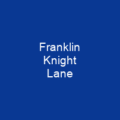Covent Garden is a district in London, on the eastern fringes of the West End, between St Martin’s Lane and Drury Lane. The district is divided by the main thoroughfare of Long Acre, north of which is given over to independent shops centred on Neal’s Yard and Seven Dials. The south contains the centralsquare with its street performers and most of the historical buildings, theatres and entertainment facilities.
About Covent Garden in brief

The central building re-opened as a shopping centre in 1980 and is now a tourist location containing cafes, pubs, small shops, and a craft market called the Apple Market, along with another market held in the Jubilee Hall. The first mention of a walled garden comes from a document detailing land owned by the Benedictine monks of St Peter Abbey, dated between 1250 and 1283. The name of the district is a French-French term for a quadrangle of mixed orchard, meadow, orchard or meadow lying between modern-day St Martin’s Lane and Maiden Lane, and Floral Lane, Maiden Street, and Flower Lane, Floral Street, Maiden Lane and Flowering Lane. The area has been served by the Piccadilly line at Covent garden tube station since 1907; the 300 yard journey from Leicester Square tube station is the shortest in London. It falls within the London boroughs of Westminster and Camden and the parliamentary constituencies of Cities of London and Westminster and Holborn and St Pancras. It was once thought to have remained as unsettled fields until the 16th century, but theories by Alan Vince and Martin Biddle that there had been an Anglo- Saxon settlement to the west of the old Roman town of Londinium were borne out in 1985 and 2005.
You want to know more about Covent Garden?
This page is based on the article Covent Garden published in Wikipedia (as of Dec. 03, 2020) and was automatically summarized using artificial intelligence.







